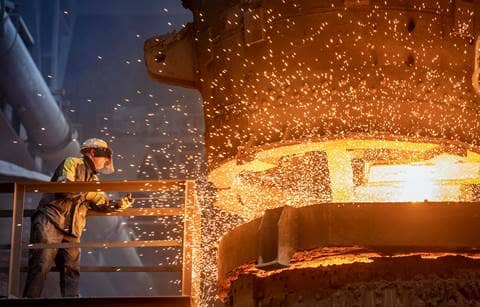On April 29, 2025, President Trump issued the executive order, “Addressing Certain Tariffs on Imported Articles,” clarifying how tariffs on automobiles and automobile parts would “stack” when multiple tariffs apply to the same good. In addition, in a separate proclamation, “Amendments to Adjusting Imports of Automobiles and Automobile Parts into the United States,” the administration took action to assist manufacturers that are increasing auto assembly in the United States in order to adjust supply chains over two years that may continue to require imported parts. These two actions relate to the March 26, 2025 executive order, “Adjusting Imports of Automobiles and Automobile Parts into the United States.”
Section 232 of the Trade Expansion Act of 1962 and International Emergency Economic Powers Act tariffs
Section 232 passenger car and light truck tariffs — the 25% ad valorem tariff currently in effect — will stand independently and won’t be subject to stacking or compounding by the Canadian or Mexican International Emergency Economic Powers Act (IEEPA) tariffs or the Section 232 tariffs on aluminum or steel and subsequent identified derivative products.
The Section 232 automobile parts 25% ad valorem tariff scheduled to go into effect on May 3, 2025, will also stand on its own and won’t be subject to stacking or compounding by the Canadian or Mexican IEEPA tariffs or the Section 232 tariffs on aluminum or steel and subsequent identified derivative products. The applicable HTSUS codes are in the Federal Register posting, Federal Register: Adjusting Imports of Automobiles and Automobile Parts Into the United States.
China Section 301 of the Trade Expansion Act of 1962 and IEEPA tariffs
China Section 301 and China IEEPA tariffs aren’t part of these adjustments and do stack on top of the Section 232 automobile and parts tariff.
USMCA-compliant automobiles and parts
It’s assumed that the USMCA-compliant provisions remain the same, given the April 29, 2025 executive order addressing tariffs refers back to the March 26, 2025 order that states, “ … to the extent these tariffs apply to the same article, these tariffs should not have a cumulative effect (or “stack” on top of one another) because the rate of duty resulting from such stacking exceed what is necessary to achieve the intended policy goals.” This indicates the 25% automobile tariffs on USMCA-compliant vehicles is applicable only to the non-U.S. content of the vehicle. This should also apply to the USMCA-compliant parts exemption.
U.S.-assembled vehicle tariff offset
To offset the parts tariffs paid by an OEM over a two-year transition period, vehicles assembled in the United States between April 3, 2025, and April 30, 2026, may qualify for an import part tariff adjustment offset of 3.75% of the total Manufacturers Suggested Retail Price (MSRP) value. The rate declines to 2.5% of the aggregated MSRP of vehicles assembled in the United States between May 1, 2026, and April 30, 2027. These offsets may be applied only to the tariff liability incurred on Section 232 tariffs. The vehicle manufacturer must detail which components and importers of record the offset is being used against.
Effective dates
Automobile part tariffs are effective May 3, 2025. Provisions in the April 29, 2025 executive order related to limiting stacking apply to all merchandise entries made on or after March 4, 2025. As such, the order is retroactive to March 4, 2025, and companies can apply for refunds through Customs and Border Patrol’s “standard procedures.” All changes to HTSUS codes required by these orders must be made by May 16, 2025.
What we’re tracking
- Addressing Certain Tariffs on Imported Articles — The White House; posted April 29, 2025
- Proclamations — The White House; posted April 29, 2025
Why it’s important
The industry will begin paying a 25% tariff on automotive parts as of May 3, 2025. If you’ve been importing USMCA-compliant parts, they will remain under these special duty provisions. These tariffs will apply to service and aftermarket parts as well since HTSUS codes don’t differentiate between parts destined for assembly plants or repair shops.
While Section 232, Section 301, and IEEPA tariffs have been established over the past 100 days, the new executive order and proclamation clarify the duties the importer of record will pay. For the most part, these orders lower the industry’s potential total tariff cost exposure, as it was previously possible to interpret that Section 232 tariffs on steel, aluminum, and derivative products; Canada, Mexico, and China IEEPA tariffs; and the Section 301 tariffs on Chinese tariffs could have been stacked or compounded one on top of each other. The April 29, 2025 orders clarify that except for Section 232 and 301 tariffs applicable to China, the other current Section 232 and Section 301 tariffs don’t stack on top of Section 232 automobile and automobile part tariffs. If you had compounded these tariffs as they became effective over the past 100 days, you can go back to document and request a refund for eligible tariffs paid since March 4, 2025.
How it impacts you
It’s clear in this proclamation and previous executive orders that there will be an increased level of tariff enforcement, leading to greater demands to understand and document the country of origin and to correctly apply trade terms such as where a good is “substantially transformed.”
The tariffs create the potential for greater production schedule volatility in the short term and reduced demand in the long term. There’s also potential for greater commercial tension between buyer and seller at every level regarding cost recovery strategies.
The availability of a vehicle manufacturer tariff offset may help reduce tariff liability at the top of the automotive value chain; however, it’s unlikely to reduce cost recovery tension for smaller subtier suppliers.
Manufacturers must also continue to closely monitor the retaliatory actions by other countries that may increase costs and prices, impact demand and revenue projections, or even risk supply chain disruption from import restrictions.
What to expect next
Companies should monitor the Federal Register, as the April 29, 2025 executive order and proclamation may be adjusted before posting. It’s essential and critical to continue monitoring the White House’s official website for continued trade-related announcements, as the pause on reciprocal tariffs deadline of July 9, 2025, nears.
In addition, the proclamation gives the Secretary of Commerce 30 days to establish a process by which automakers can request an import adjustment offset amount, including the required information to disclose. All HTSUS codes to comply with the executive order must be published by May 16, 2025. This will occur in the Federal Register.





